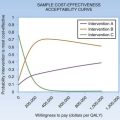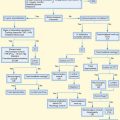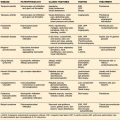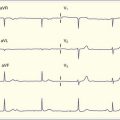216 Patient-Centered Care
• Patient-centered care is an approach to patient-provider interactions in which providers work together with patients and their families in an effort to ensure that the patient’s personal experience and preferences are an integral part of the care process.
• A patient-centered approach to care confers many benefits in the acute care setting and can be critical in overcoming barriers to the communication process in the emergency department.
• The practice of patient-centered care involves both personal elements that individual providers can integrate into their daily interactions, as well as system-level elements that can be implemented and supported on the departmental and institutional level.
Goals
The goals of this chapter are as follows:
1. To review the evolution and core features of PCC and its importance to clinical practice in emergency medicine
2. To discuss practical, realistic approaches and strategies in the following three domains of daily clinical practice, which can facilitate the delivery of PCC:
Background
The concept of PCC gained attention with the influential Institute of Medicine reports in 1999 (“To Err Is Human”) and 2001 (“Crossing the Quality Chasm”). The first report outlined mechanisms to improve patient safety, including efforts to engage patients in their care and enhance their understanding of their treatment.1 Two years later, “Crossing the Quality Chasm” identified PCC as one of the six aims intended to improve the quality of health care in our country.2
In 2006, the American College of Emergency Physicians (ACEP) and the American Academy of Pediatrics issued a joint policy statement supporting patient and family-centered care as an important means of improving satisfaction, safety, and quality of care for patients and their families.3
The emergency department (ED) environment is inherently challenging to the communication process between patients and providers, and a patient-centered approach to care can be particularly valuable in this setting. ED providers routinely confront significant time constraints, unpredicted interruptions, and overcrowding while caring for patients with life-threatening illness and injury.4–7 Given these circumstances, it is essential that ED providers possess skill in rapidly establishing rapport and engaging patients in critical decision making. A patient-centered approach to care is vital in overcoming barriers to the communication process through an understanding of the many situational and personal factors that characterize a patient’s visit to the ED. In many cases, fear, anxiety, and uncertainty, as well as preconceived and often unrealistic expectations, play an important role, and these factors must be recognized and appropriately managed to effectively communicate with patients.3
A patient-centered approach to care provides clear benefits to the immediate patient-provider interaction, but it also appears to have a positive impact on important outcomes for the patient and provider. Although research in this area is challenging, early work indicates that PCC improves patient satisfaction and may also enhance adherence and health outcomes.8–12
Personal Issues
Communication
Verbal communication in our interactions with patients includes several key elements:
1. Introduce yourself, including your name and role.
2. Allow patients to speak and complete their thoughts while avoiding interruptions whenever possible. Be sure that you address all the patient’s medical concerns.
3. Use clear, nontechnical language.
4. Give patients the opportunity to ask questions.
5. Review information to confirm patient understanding (i.e., treatment, diagnostics, follow-up, discharge instructions).
Nonverbal communication in our interactions with patients has several key elements:
1. Greet patients and family members with a handshake when appropriate.
2. Make consistent eye contact and commit your complete attention to the interaction.
3. Use calm, compassionate body language.
4. Consider appropriate use of physical touch to provide comfort while being sensitive to cultural issues.
Operational Considerations
Waiting and Delays
In any situation, when a patient needs to wait or experiences a delay in care, it is vital that providers reconnect with the patient and provide explanations and reassurance. Previous research has demonstrated that patients have greater tolerance for these circumstances if they are well informed about the causes and the anticipated duration.13
Systems Issues
Patient Satisfaction
Common themes in the literature are that provider interpersonal communication skills, delivery of information and explanations, and perceived wait times most strongly correlate with patient satisfaction. Although actual wait times are less likely to predict satisfaction or a lack thereof, patients with a length of stay of 8 hours are generally less satisfied than their counterparts waiting only 4 hours.14 Operational efficiency is not only critical to ensuring patient satisfaction but is also a key factor associated with a patient-centered approach to care.
Medical-Legal Factors
The two primary factors associated with filing medical malpractice claims or lawsuits are bad patient outcomes and unhappy patients. Although the relatively frequency of medical malpractice claims is fairly low, with a range of approximately 1 in 25,000 to 40,000 ED encounters, it is difficult to find definitive correlations between patient satisfaction and lawsuits. However, the preponderance of the literature more than strongly suggests that poor patient satisfaction results in more patient complaints. Additional data suggest a strong correlation with patient complaints and risk management events and medical malpractice lawsuits. In one study, a 1-point decrease in patient satisfaction survey results correlated with a 6% increase in the incidence of risk management events (claims, lawsuits, and incident reports). In this same study, 75% of 483 claims were associated with communication errors, thus emphasizing the need for improved communication between patients and providers.15 Patients who are well informed about their care are less likely to be taken by surprise by changes in their condition, medication side effects, and failure of treatment. To that end, treatment and diagnostic plans should be discussed with patients and their significant others, results should also be discussed with them, therapeutic response to treatments needs to be assessed, and final disposition plans need to be discussed and agreed and comprehension acknowledged and confirmed. Although many busy EDs defer some of these tasks to nursing, it is of vital importance that the physician at least reinforce these communications. However, it is ideal for the physician to be the primary provider to conduct communications with the patient.
Patient handoffs are another aspect of a patient-centered culture that is both an operational and a risk management concern. Up to 24% of medical malpractice claims result from faulty handoffs. Handoffs are transitions in care from one provider to another and often from one care setting to another. To ensure that errors are avoided, the quality of care is not compromised, and patient safety is preserved, a standardized approach should be taken to handoffs in the ED. Recommended steps include a face-to-face encounter by the incoming and outgoing providers, an explanation of the active problem list and any outstanding diagnostics, and the expectations for disposition. In addition, it is useful to advise the patient that the handoff is occurring and even introduce the patient to the incoming provider.16
Compliance
HIPAA focuses on the patient’s right to due care being given to their protected health information. This information, sensitive to the patient, must be handled in accordance with this statute to protect the patient’s privacy. EMTALA requires that all patients who go to the hospital, its “campus,” and related buildings with an emergency medical condition have a medical screening examination (MSE) performed, regardless of their ability to pay. The MSE also includes stabilization of any identified emergency medical condition. Thus, through the course of compliance and performing the MSE, the care of most ED patients is completed. Though not a financially viable program for hospitals and emergency medicine, it is certainly a patient-centered initiative that allows access to care for all emergency patients (Box 216.1).
Box 216.1 Operational Strategies for Patient-Centered Emergency Care
Initiate diagnostics as soon as possible after arrival (by physician evaluation, provider in triage, or standing orders).
Assess and address pain promptly.
Build processes to notify the physician of returned results and prompt delivery of the results.
Promote diagnostic efficiency (only appropriate testing, obtaining laboratory tests at the time of insertion of an intravenous line).
Make decisions promptly once sufficient data have returned.
Use computerized discharge instructions at the second-grade educational level (language appropriate).
Provide medical interpretive services (also avoids violation of the Civil Rights Act of 1964).
Formalize processes for disclosure of medical errors.
Draft policies for EMTALA compliance.
Draft policies for HIPAA compliance.
Formalize the patient handoff process.
Formalize the approach to and emphasis on patient satisfaction.
Critical Issues
Family-Witnessed Resuscitation
Interest in the practice of family-witnessed resuscitation (FWR) began in the 1980s after studies surveying families of survivors of sudden death found that their most frequent criticisms centered on frustrations with inadequate information and updates during resuscitation.17 Additionally, it was noted that families of critically ill or dying patients often complained about feeling helpless, uninformed, and uninvolved.18 As a result of these findings and some requests by family members to be present during resuscitation procedures, standard practices excluding families began to come into question.19,20
Within the field of emergency medicine there has been significant debate regarding whether families should be allowed to accompany their relatives who are undergoing critical resuscitation. Proponents of this practice advocate that family members should have the choice to be present during these desperate efforts, which are often the final moments of patients’ lives. However, many medical professionals are strongly opposed to the idea and cite a wide range of concerns: that relatives will interfere with or misunderstand medical efforts, that the events will be too upsetting for relatives to bear, and that family presence will create additional stress and anxiety for the medical team.21–25
Research to date demonstrates that families who are allowed to be present during resuscitation procedures recognize the practice as beneficial to both themselves and their ill relatives. Family members perceive their presence as important not only to provide support and reassurance to the patient but also to relieve their own anxiety by reducing feelings of helplessness and the “agony of waiting.”26 Relatives also report that being present with a dying loved one eased their subsequent bereavement process.20,26,27
Research findings also indicate that the anticipated problems or expected complications of FWR fail to occur in clinical practice.27–29
In recent years FWR has been recognized as being fundamentally consistent with a patient- and family-centered approach to care.30 FWR provides the opportunity to engage and empower a patient’s loved ones during the most critical moments of serious injury or illness. The open door facilitates a connection and partnership between the provider and family that can have significant downstream effects on this relationship and, ultimately, the grief and bereavement process.
1 Institute of Medicine. To err is human: building a safer health system. Washington, DC: National Academy Press; 2000.
2 Institute of Medicine. Crossing the quality chasm: a new health system for the twenty-first century. Washington, DC: National Academy Press; 2001.
3 O’Malley P, Mace SE, Brown K. Patient- and family-centered care and the role of the emergency physician providing care to a child in the emergency department. Ann Emerg Med. 2006;48:643–645.
4 Knopp R, Rosenzweig S, Bernstein E, et al. Physician-patient communication in the emergency department, part 1. Acad Emerg Med. 1996;3:1065–1069.
5 Rosenzweig S. Emergency rapport. J Emerg Med. 1993;11:775–778.
6 Pytel C, Fielden NM, Meyer KH, et al. Nurse-patient/visitor communication in the emergency department. J Emerg Nurs. 2009;35:406–411.
7 Kelly AE. Relationships in emergency care: communication and impact. Adv Emerg Nurs J. 2005;27:192–197.
8 Lee YY, Lin JL. Do patient autonomy preferences matter? Linking patient-centered care to patient-physician relationships and health outcomes. Soc Sci Med. 2010;71:1811–1818.
9 DiGiola A, Lorenz H, Greenhouse PK. A Patient-centered model to improve metrics without cost increase. J Nurs Admin. 2010;40:540–546.
10 Stewart M, Brown JB, Donner A, et al. The impact of patient-centered care on outcomes. J Fam Pract. 2000;49:796–804.
11 Mallinger JB, Griggs JJ, Shields CG. Patient-centered care and breast cancer survivors’ satisfaction with information. Patient Educ Couns. 2005;57:3429.
12 Kahn KL, Schneider EC, Malin JL, et al. Patient-centered experiences in breast cancer. Med Care. 2007;45:431–439.
13 Sun BC, Adams J, Orav EJ, et al. Determinants of patient satisfaction and willingness to return with emergency care. Ann Emerg Med. 2000;35:426–434.
14 Thompson DA, Yarnold PR, Williams DR, et al. Effects of actual waiting time, perceived waiting time, information delivery, and expressive quality on patient satisfaction in the emergency department. Ann Emerg Med. 1996;28:657–665.
15 Stelfox HT, Gandhi TK, Orav EJ, et al. The relation of patient satisfaction with complaints against physicians and malpractice lawsuits. Am J Med. 2005;118:1126–1133.
16 Cheung DS, Kelly JJ, Beach C, et al. Improving handoffs in the emergency department. Ann Emerg Med. 2010;55:171–180.
17 Parrish GA, Holdren KS, Skiendzielewski JJ, et al. Emergency department experience with sudden death: a survey of survivors. Ann Emerg Med. 1987;16:792–796.
18 Vanezis M, McGee A. Mediating factors in the grieving process of the suddenly bereaved. Brit J Nurs. 1999;8:932–937.
19 Post H. Letting the family in during a code. Nurs. 1989;19:43–46.
20 Doyle CJ, Post H, Burney RE, et al. Family participation during resuscitation: an option. Ann Emerg Med. 1987;16:S673–S675.
21 Helmer SD, Smith RS, Dort JM, et al. Family presence during trauma resuscitation: a survey of AAST and ENA members. J Trauma. 2000;48:1015–1022. discussion 1023–4
22 Mitchell MH, Lynch MB. Should relatives be allowed in the resuscitation room? J Accid Emerg Med. 1997;14:366–369. discussion 370
23 McClenathan BM, Torrington KG, Uyehara CF. Family member presence during cardiopulmonary resuscitation: a survey of U.S. and international critical care professionals. Chest. 2002;122:2204–2211.
24 Pafford MB. Should family members be present during CPR? J Ark Med Soc. 2002;98:304–306.
25 Osuagwu C. ED codes: keep the family out.[comment]. J Emerg Nurs. 1991;17:363.
26 Meyers TA, Eichhorn DJ, Guzzetta CE, et al. Family presence during invasive procedures and resuscitation. Am J Nurs. 2000;100:32–42.
27 Robinson SM, Mackenzie-Ross S, Campbell Hewson GL, et al. Psychological effect of witnessed resuscitation on bereaved relatives. Lancet. 1998;352:614–617.
28 Hanson C, Strawser D. Family presence during cardiopulmonary resuscitation: Foote Hospital emergency department’s nine-year perspective. J Emerg Nurs. 1992;18:104–106.
29 Compton S, Levy P, Griffin M, et al. Family-witnessed resuscitation: bereavement outcomes in an urban environment. Journal of Palliat. Medicine. 2011;14:715–721.
30 Baren JM. Rising to the challenge of family-centered care in emergency medicine. Acad Emerg Med. 2001;8:1182–1185.






